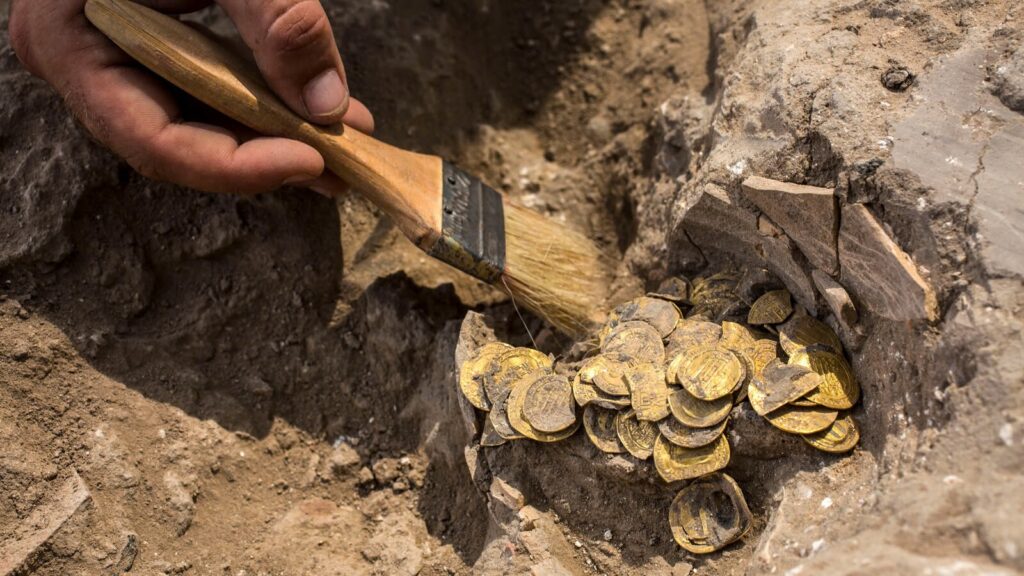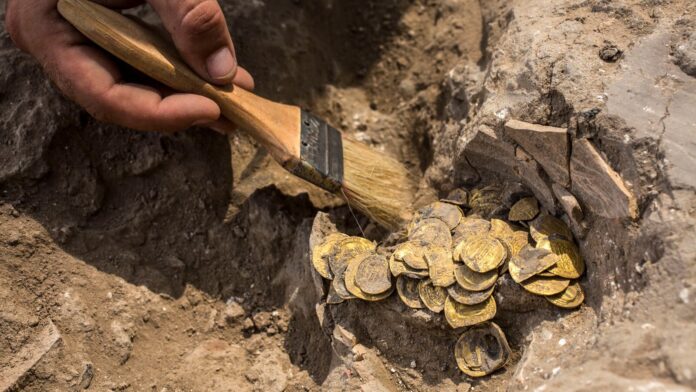Archaeologists Strike Gold in Plovdiv’s Old Town
In a remarkable discovery that sheds light on the rich history of one of Europe’s oldest cities, archaeologists have unearthed a treasure trove of ancient artifacts in Plovdiv, southern Bulgaria. The find includes over 500 ancient coins and a gold template for crafting jewelry, spanning various historical periods.

A Glimpse into Philippopolis’ Past
The excavation site, nestled at the foot of Plovdiv’s Old Town in the Philipopol-Trimontium-Plovdiv historical zone, has yielded fascinating insights into the city’s multilayered past. Located near the Eastern Gate of the ancient city of Philippopolis, this area has been inhabited for more than 2,500 years.

Head archaeologist Desislava Davidova describes the site as “exceptionally fascinating,” noting that Plovdiv’s cultural layers can reach depths of up to seven meters. The current excavation has delved approximately 6.5 meters deep, revealing additions from multiple eras, including the Hellenistic (3rd–1st century BC) and Roman periods.
Coins, Crafts, and Ancient Commerce
The majority of the discovered coins are bronze, though some may be silver beneath their thick patina. Davidova suggests that the site likely housed a small workshop, similar to those from the Bulgarian Revival period.

Among the most intriguing finds is a gold template, believed to have been used for creating ornamental jewelry rather than minting coins. This artifact, along with the abundance of pottery from various eras, paints a vivid picture of the area’s bustling craft and commerce scene in antiquity.
Inscriptions and Imperial Connections
Adding to the site’s historical significance, researchers uncovered a special inscription early in the excavation process. Dr. Nikolay Sharankov, an epigraphy specialist, believes it to be an honorific inscription from a statue pedestal dating back to the reign of Emperor Septimius Severus (193-211 AD).
Plovdiv: A City of Seven Hills and Countless Stories
Plovdiv’s history stretches back to the 6th millennium BC, making it one of Europe’s oldest continuously inhabited cities. Built around seven hills and situated on the banks of the Maritsa River, the city has witnessed the rise and fall of numerous civilizations.
From its origins as a Thracian settlement to its conquest by Philip II of Macedon in the 4th century BC (which gave it the name Philippopolis), Plovdiv has been shaped by a diverse array of cultures. Persians, Greeks, Celts, Romans, Goths, Huns, Bulgarians, Slav-Vikings, Crusaders, and Ottomans have all left their mark on this ancient urban center.

As excavations continue and experts analyze the newly discovered artifacts, Plovdiv’s Old Town continues to reveal its secrets, offering us a tangible connection to the rich tapestry of European history.

